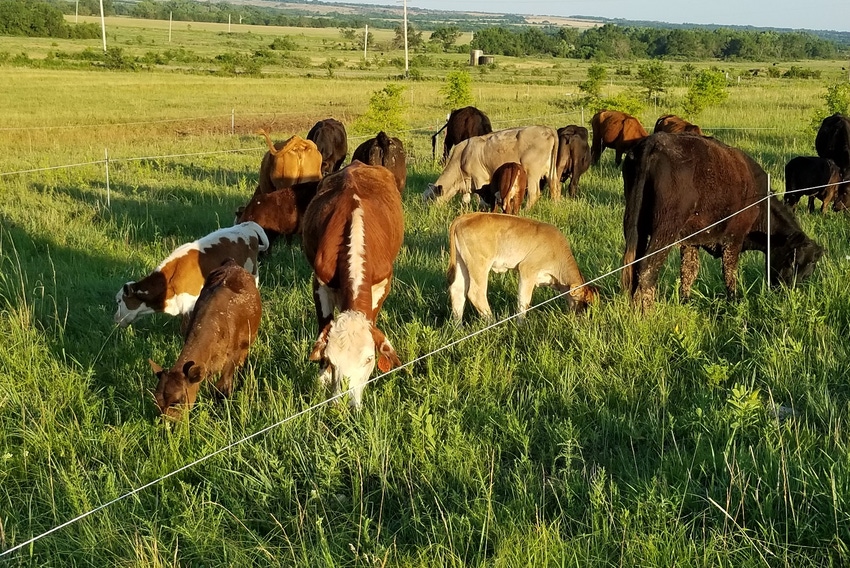
While in college I was told once or more that a high percentage of what we were taught would be found incorrect in a few years. I’ve witnessed the accuracy of that statement.
Natural model principles, however, are here to stay.
Recently down at Texas A&M researchers have found that heifer development is greatly affected by the last six weeks of prenatal maternal nutrition. The first 30 days postnatal was also found to weigh heavily on their ability to perform as a cow in the future. Remember: The last six weeks and the first 30 days. Calving five to six weeks after good grass arrives ensures that this happens. It should make sense.
I’ve been quite involved every day with animal health and production for almost 50 years. Very few ideas of mine and many “new” programs touted by the experts have been applied by yours truly. Most failed. A bunch of the programs were big conundrums. Some were my brilliant ideas that also failed.
One cluster mess is early weaning. For the last 30 plus years I’ve annually read where another mistaken pilgrim is trying to justify weaning a herd of calves at 100-180 days of age. The reasons given for early weaning include:
Pasture conditions heading south
Weather, usually a lack of moisture
Reduce forage and/or hay consumption with dry cows
Cow body condition score (BCS)
Decrease in cow carrying cost
Reduction of supplement cost
For all the wrong reasons these experts never get to the bottom of the problem because they fail to think in “wholes.” For example, seldom is cow size mentioned. The same is true of calving season. I wonder if these people have studied Fred Provenza’s last 40 years of work, and all that has been learned recently concerning fetal programming and epigenetics.
The natural model does not wean calves early unless there is an occasional premature death of an old cow. A bunch of the orphans quickly learn to steal from other cows by nursing from behind (because cows are not good at kicking straight back).
Well-planned grazing management also helps eliminate early weaning programs and associated health problems. It is a beautiful sight to watch calves as they grow up in a family unit. Diverse and recovered forage growth plus a quart of milk daily make it quite routine for May- and/or June-calving cows weighing 900 pounds to have 500-pound heifers or 550-pound steers or 600-pound bulls when they kick the calf off and wean them in February, March or April. Early spring green growth is good stuff for 9- to 10-month-old calves and there is little to zero stress.
Early weaning does not increase the effective stocking rate or ranch profitability. Early weaning might honestly be rightly accused as a way to support an overstocking program. Without major grazing management changes the herd will still spiral downward. Early weaning is a band-aid at best. It’ll be a short-term program. My suggestion is to do more studying before you adopt the idea. Why not read a copy of Walt Davis’s “How not to go broke ranching” two or three times?
Now, early weaning does increase the noise and work load and health issues. Balloon teats and broken udders are a manmade problem that is sped up by weaning young. Deer and buffalo have neither.
Think and study what happens when a calf stays on a cow for 300 days rather than 120.
The cow performs more good work.
The calf builds a much more competent immune and digestive system.
The calf becomes more environmentally and forage intelligent.
We sell a higher percentage of a cow’s weight at a low cost through the calf that is now considered a yearling in May, June, July or August. These are normally better markets.
Better forage and soil management can double or triple profitability.
The cattle support the ranch rather than us supporting the cattle.
It takes fewer cattle to make a load.
The most fun and profit any of us will ever enjoy is when we double or triple the forage growth and soil health on the ranch that is already paid for. If we have it drought-proofed and low-cost it will be harder to go broke.
Four thousand years ago King Solomon was inspired by the Lord to write, “There is nothing new under the sun.” Folks, this cow business is a matter of following a handful of natural model principles and taking care of several details. It is not new knowledge. Early weaning is not one of them, certainly not habitually, and is one that we should not dwell on for a significant period.
About the Author(s)
You May Also Like






